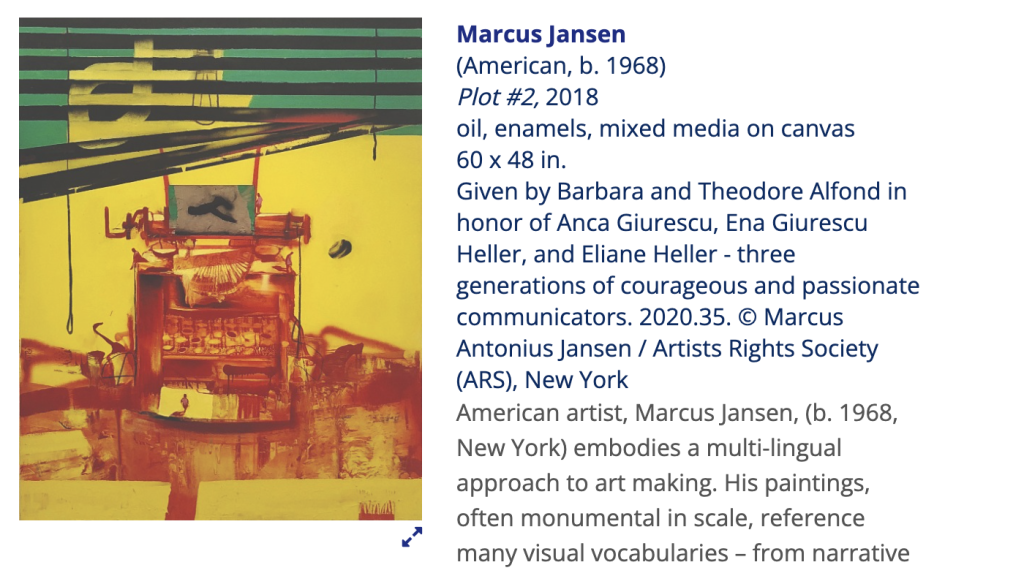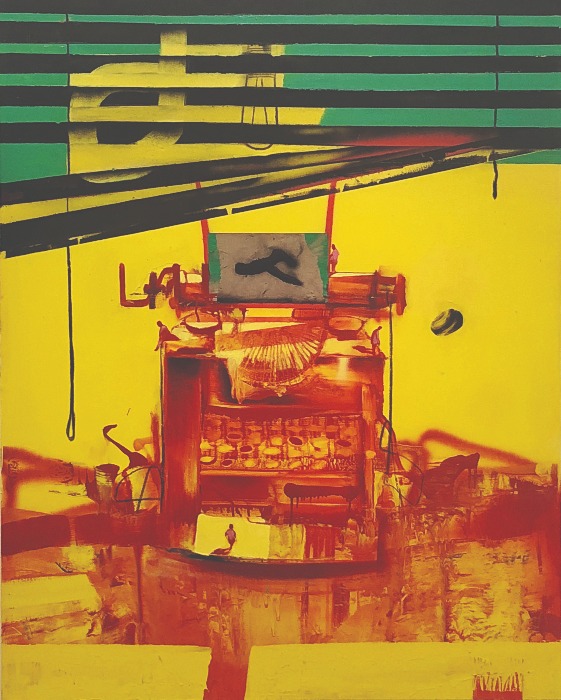
Marcus Jansen (American, b. 1968) Plot #2, 2018, oil, enamels, mixed media on canvas, 60 x 48 in. Given by Barbara and Theodore Alfond in honor of Anca Giurescu, Ena Giurescu Heller, and Eliane Heller – three generations of courageous and passionate communicators. 2020.35. © Marcus Antonius Jansen / Artists Rights Society (ARS), New York
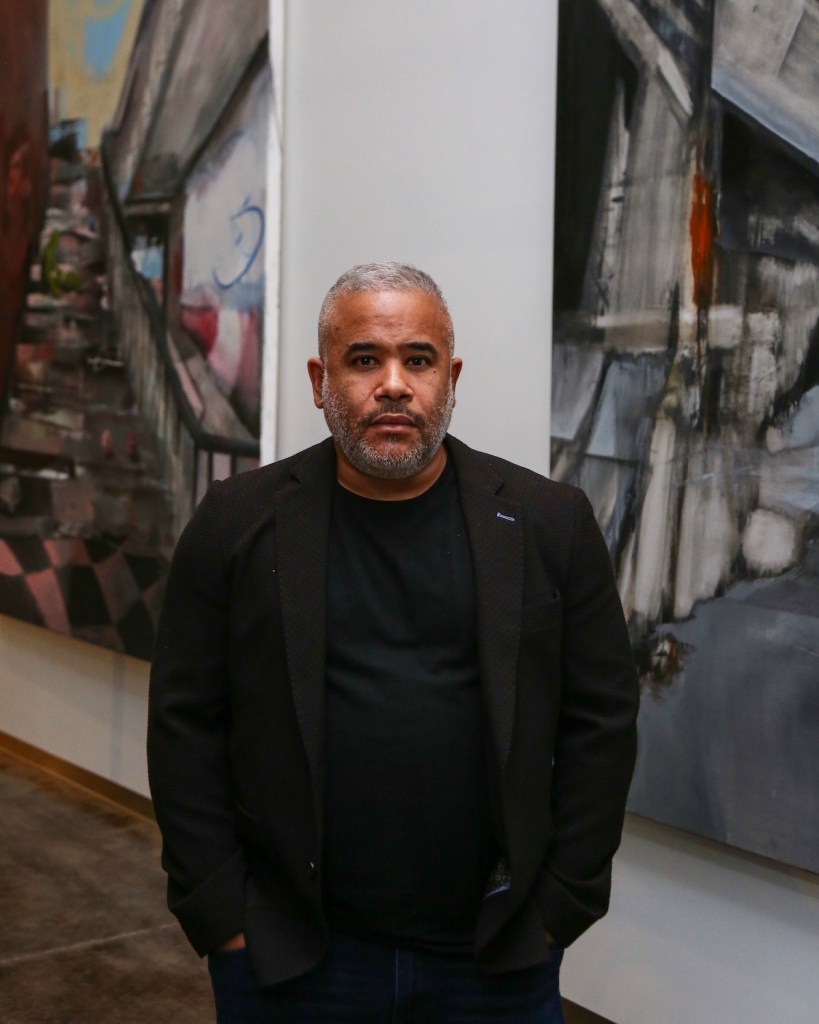
American artist, Marcus Jansen, (b. 1968, New York) embodies a multi-lingual approach to art making. His paintings, often monumental in scale, reference many visual vocabularies – from narrative history painting to graffiti and street art. Richly layered in content and form, Jansen leverages his art practice as a method to synthesize and express the traumatic experiences of both civilian life and military experience through multiple conflicts and tours of duty
Jansen’s paintings reveal the complexing and intensity of his personal history. His paintings explore how the spaciousness of one’s subconscious can be invaded by cultural signifiers both familiar and strange, a highly caffeinated search and rescue of memory, and hypervigilance resulting from an awareness of constant surveillance – all of which result in a disorienting sense of vulnerability.

The work in the Alfond Collection of Contemporary Art, Plot #2, 2018, is resonant and haunting in its image and subject. A brick red typewriter, that feels partially stenciled onto a mustard yellow ground, is both the subject of the painting, and the set for another subtle narrative landscape that unfolds within the picture plane. Above the typewriter hangs a broken set of blinds, with the sketch of a hanging light bulb in the background. The offset blinds and bulb signify a space that has been violated, or that could be at any moment; and the image becomes more unsettling as one observes the minute figure that often populates Jansen’s paintings, as he traverses the space created in the lower left corner of the typewriter. The threatening mood of the painting alludes to histories of surveillance and power, and in a more reductive image, contains themes that are the foundation for Jansen’s practice.
There are multiple approaches to unpacking this work: the formal residue of graffiti, a reflection on the color palette and color theory, the compositional architecture of the image, the surreal qualities of the figure in a scale that is ever-shifting. This work will be poignant across many disciplines from psychology to history, as the artist so generously grants access to the most intimate, vulnerable and revealing aspects of his lived experience as an American, an ex-pat, a soldier and a survivor of Post-Traumatic Stress disorder.
Abigail Ross Goodman
Consulting Curator of Contemporary Art
Learn more about Marcus Jansen and his work:
Artist Marcus Jansen Video Playlist
Listen to an artist talk by Jansen and exhibition tours in English and Spanish of Marcus Jansen: E Pluribus Unum by Rollins Museum of Art Curator, Gisela Carbonell.
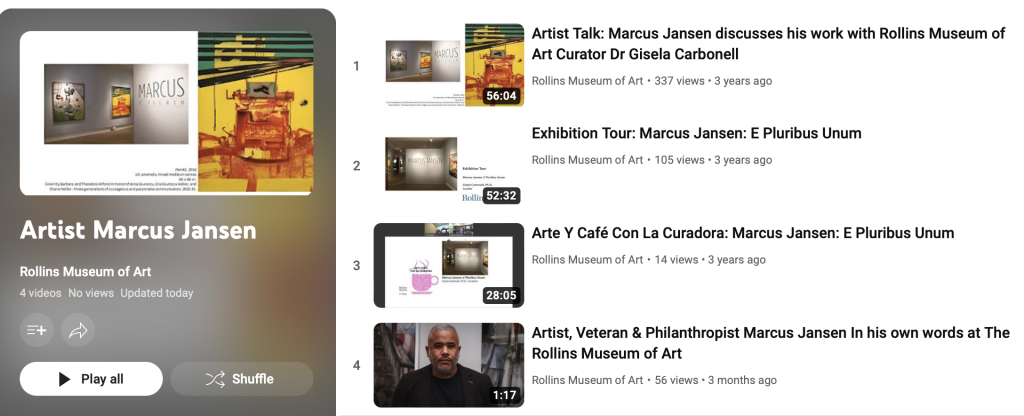
360 Degree Virtual View of E Pluribus Unum
View Jansen’s 2020 exhibition at Rollins Museum of Art
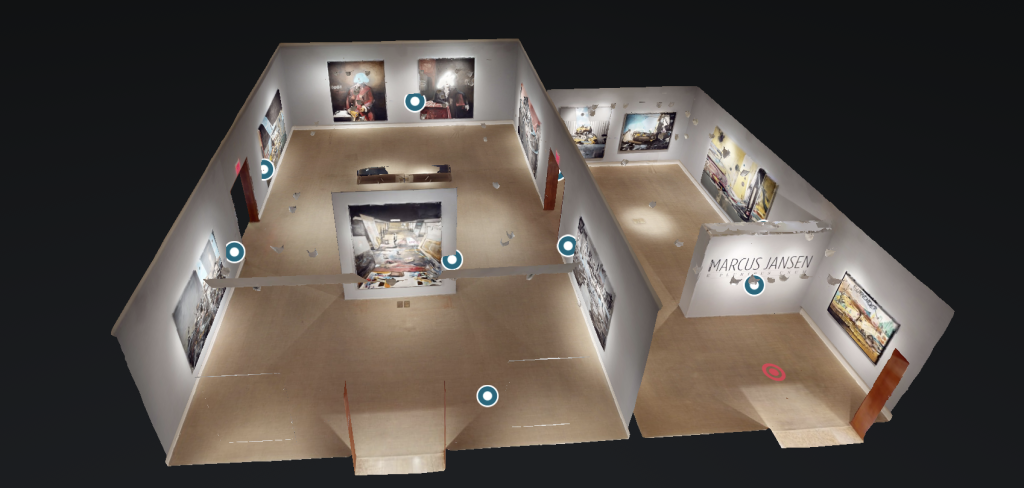
E Pluribus Unum Exhibition Page
Learn more about Jansen’s 2020 exhibition at Rollins Museum of Art

Rollins Museum of Art Collections Page
The Rollins Museum of Art’s permanent collection contains more than 6,000 works of art. View selections from the collection with accompanying insights into the works.
